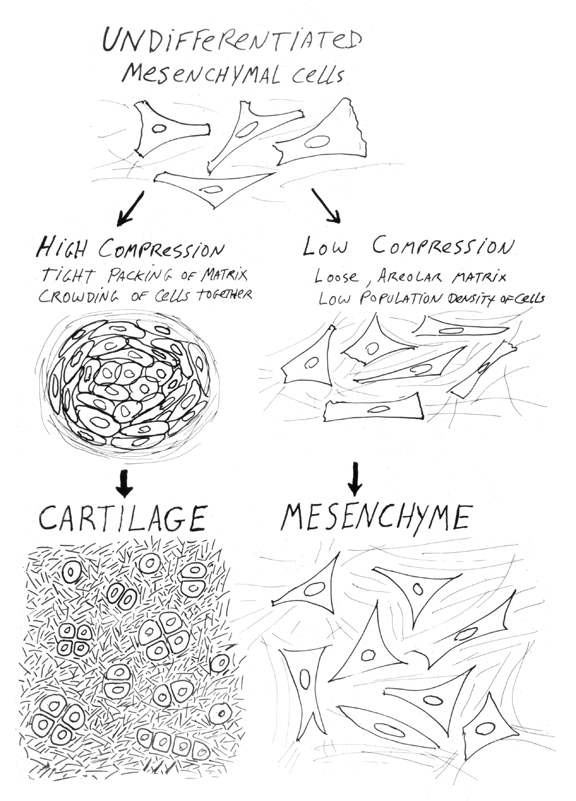January 11: Subdivision of Embryos Into Ectoderm, Mesoderm & Endoderm
All vertebrate embryos develop through the same sequence of branching and sub-branching.
All have gastrulation and neurulation; ectoderm always subdivides into neural tube, neural crest and somatic ectoderm; mesoderm always subdivides into notochord, somites, intermediate mesoderm, and lateral plate mesoderm; endoderm always forms evaginations that become salivary glands, thyroid glands, lungs (except in fish), pancreas and liver.
All of these subdivisions occur by active folding (mostly) or other morphogenetic movements.
Invertebrate phyla have different branching patterns, but are considered to begin with ectoderm, mesoderm and endoderm.
Arthropods' equivalent to the spinal cord runs down the belly, under the intestine, and the heart is on the back.
Surprisingly, the signaling molecules that stimulate and control development and differentiation have turned out to be very much the same in vertebrates as in insects (& everything).
This was a big surprise. Even eyes, which evolved separately and work by different principles, are stimulated to form by almost the same proteins.
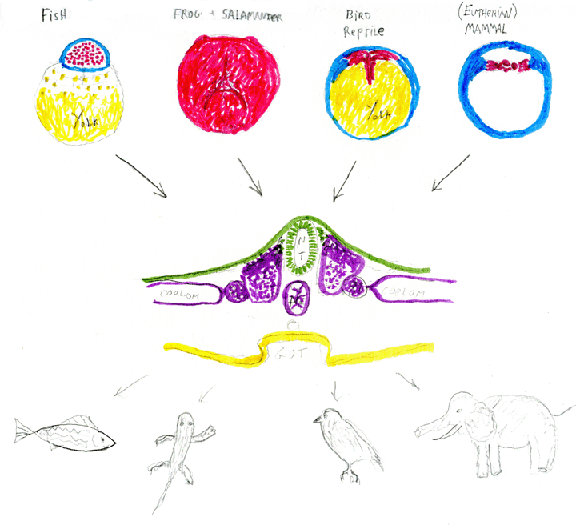
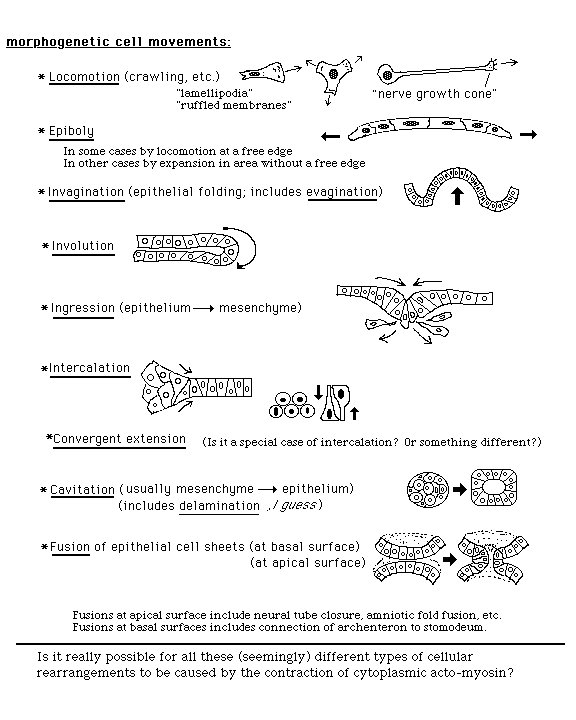
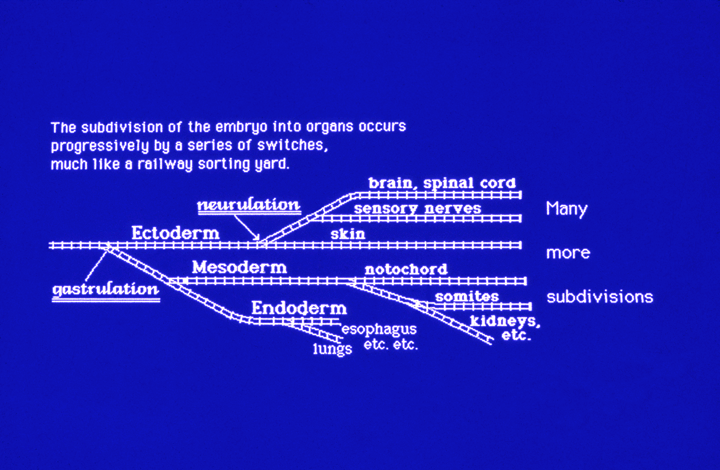
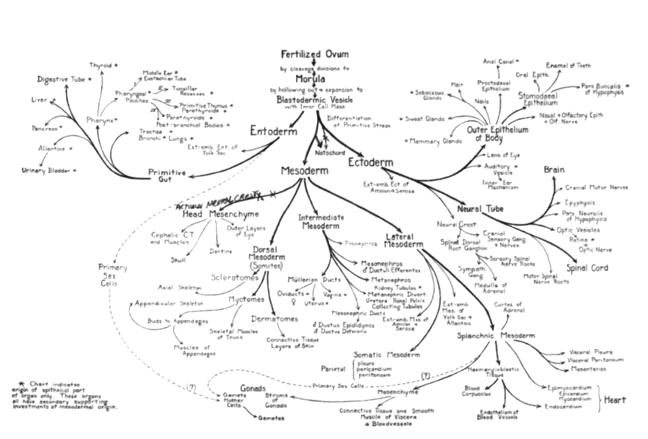
illustration from a very old book; you do NOT need to learn it!
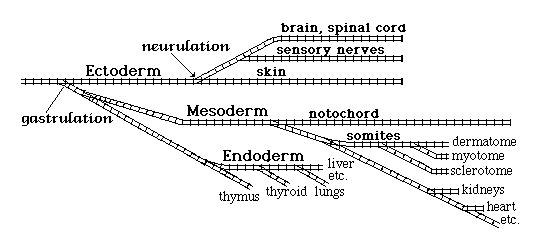
video of amphibian gastrulation

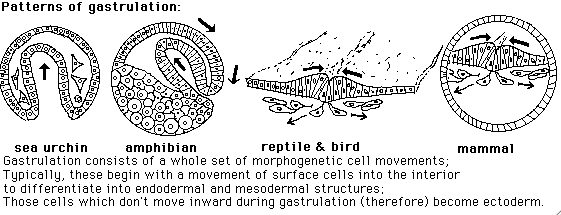
video of neurulation in a chick embryo
This was created by photographing serial sections from a fixed embryo, beginning with the posterior end and progressing toward the anterior. Because neurulation progresses from anterior to posterior, this creates what appears to be a time-lapse movie of the process occurring.

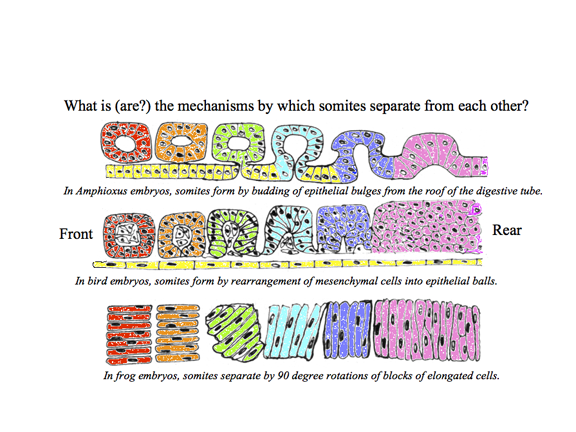
anterior
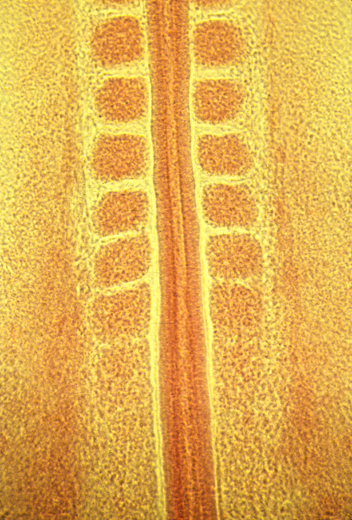
posterior

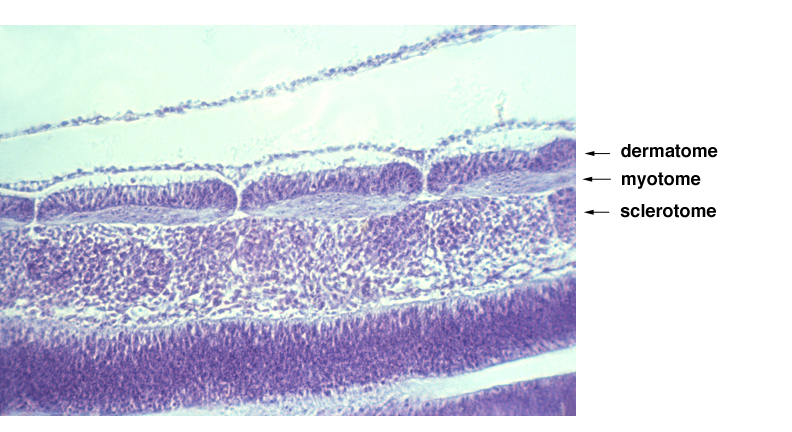
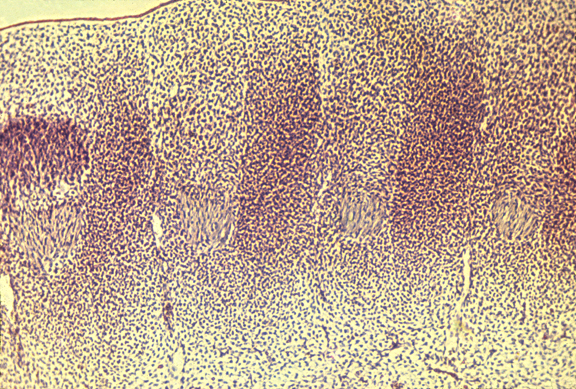
section through sclerotomes
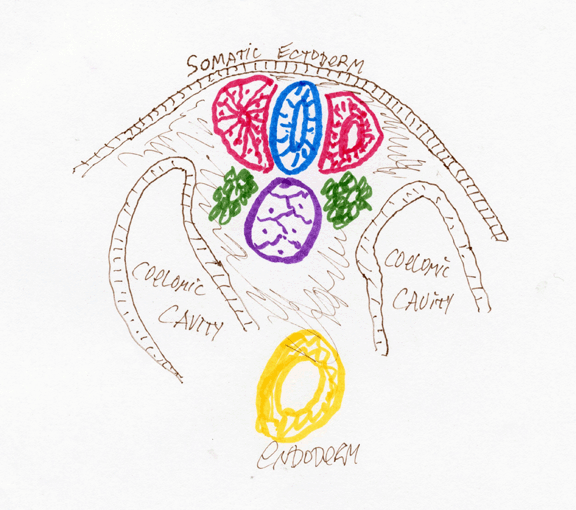
The lecture ended here, and will be continued on Monday.

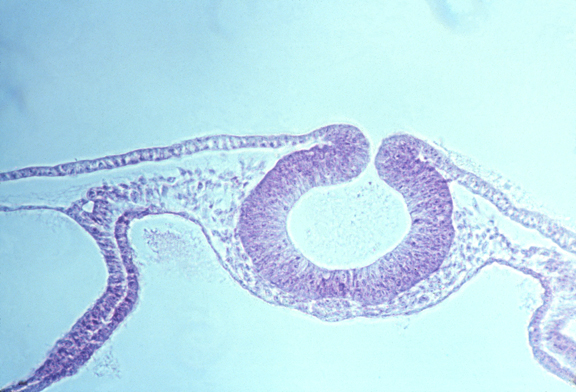
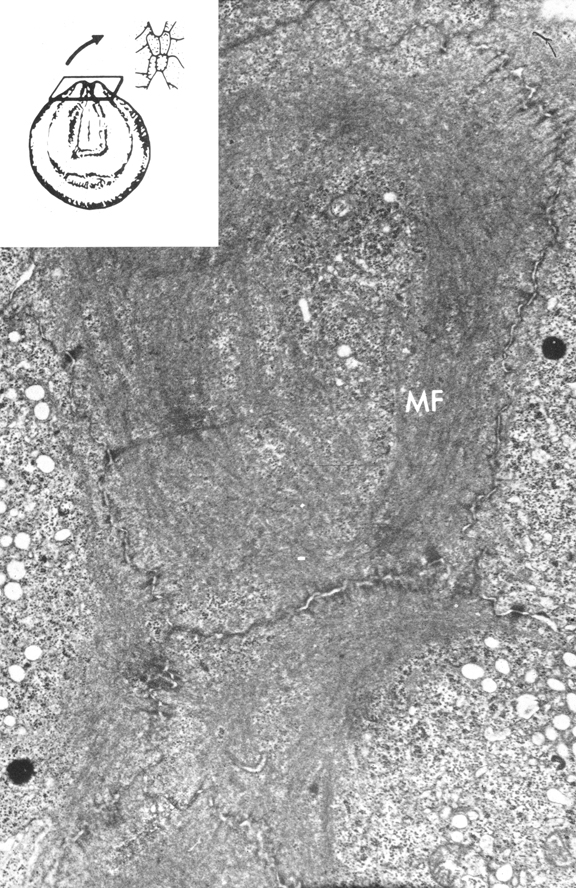
Cytoplasmic actin contraction causes folding of the neural tube.
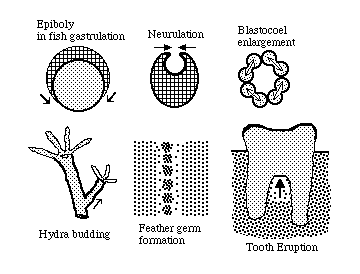
Six examples of embryonic cell rearrangements that were long assumed to be caused by pressures of growing cells, but that turned out to have different causes.
These phenomena will all be discussed in detail later in the course. For now, the point is that you should avoid assuming that cell growth and division are major causes of cell rearrangement.
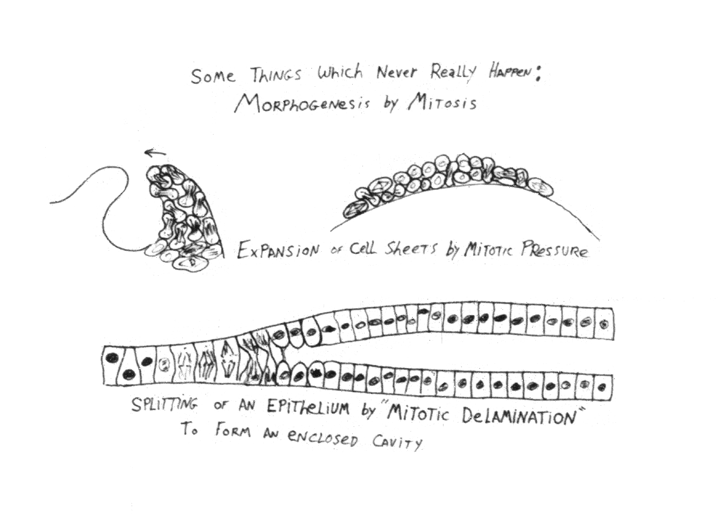
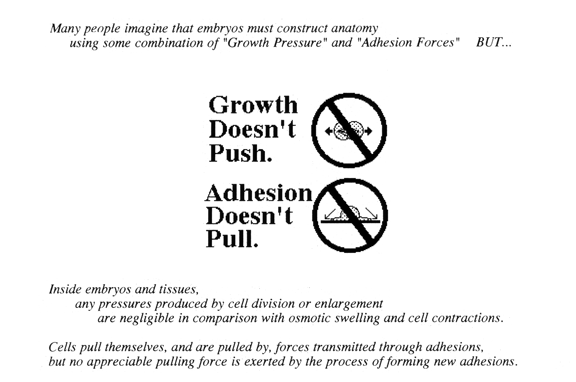
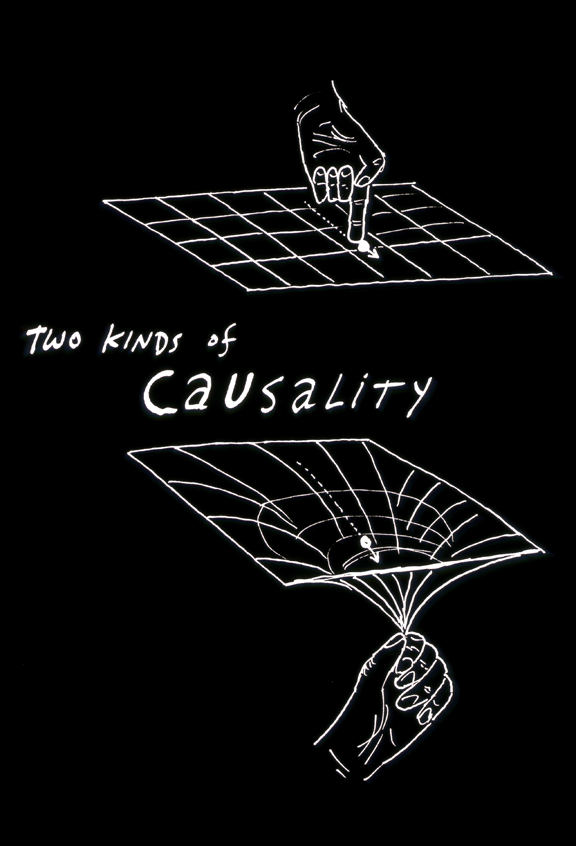
Changes (in embryos or anything else) are sometimes caused by external forces, but sometimes caused instead by changes in intrinsic properties of materials. People usually assume that causes are external to the properties of the materials being changed.
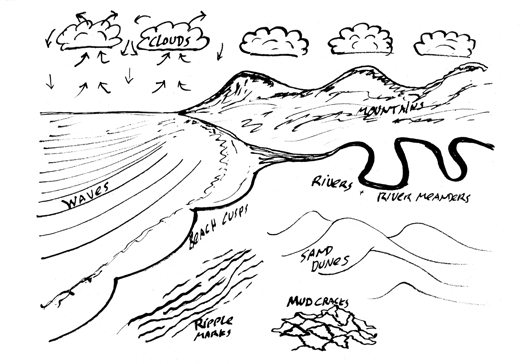
Non-living materials often rearrange spontaneously to form fairly regular geometric patterns and shapes. Embryonic pattern formation is more analogous to such self-forming shapes.
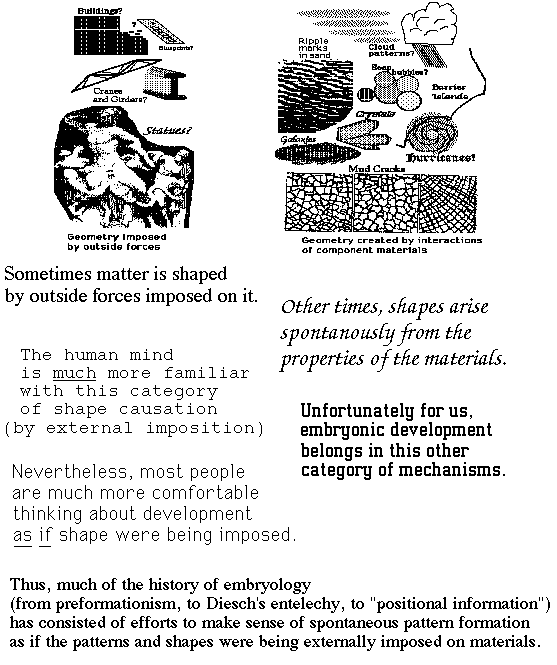
Because people make shapes by imposting external forces on matter, they tend to assume that embryonic shape changes are caused by "information" and that genes are "blueprints".
